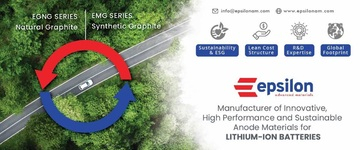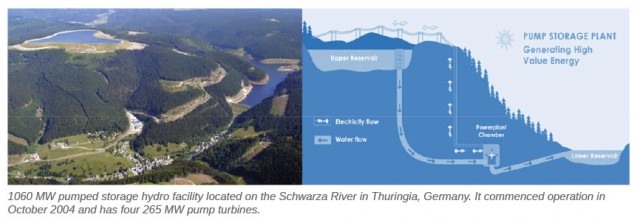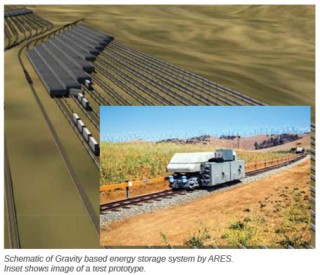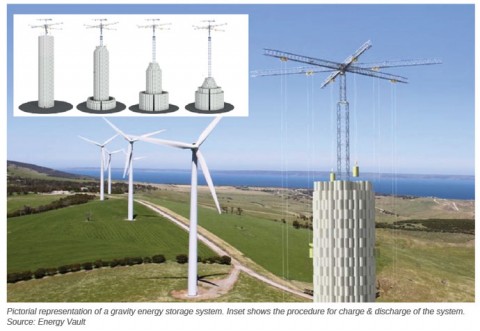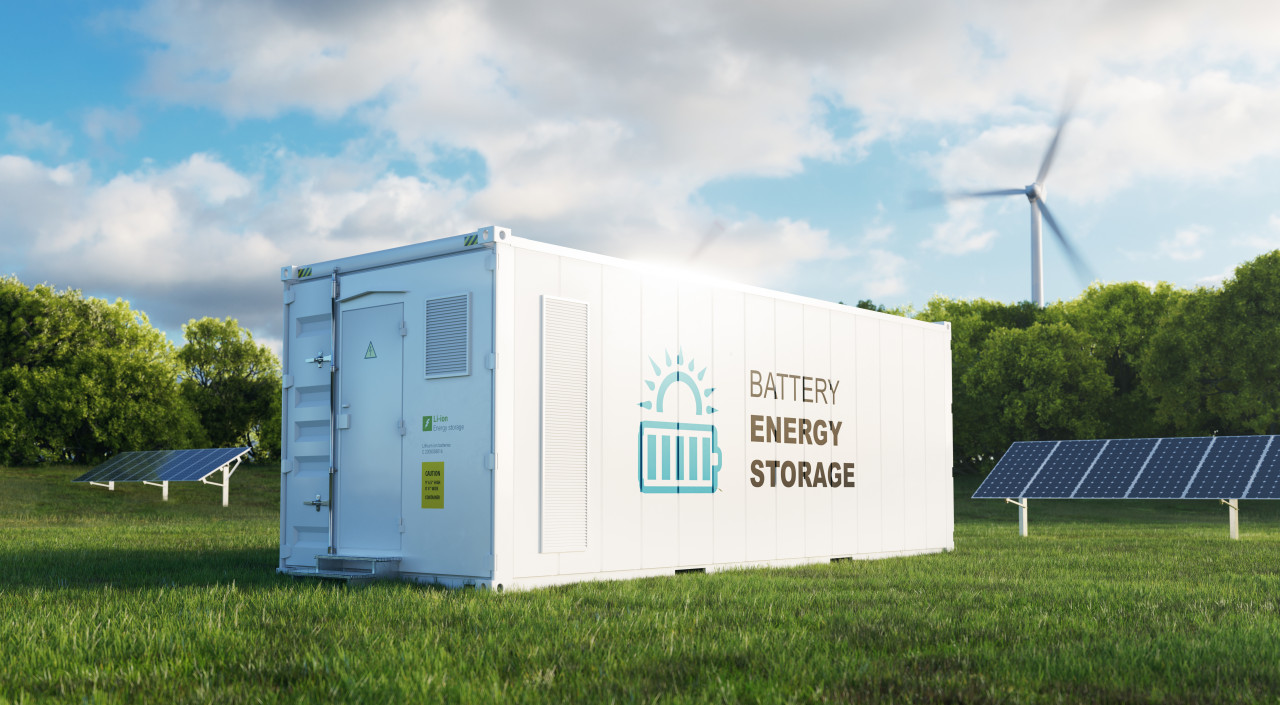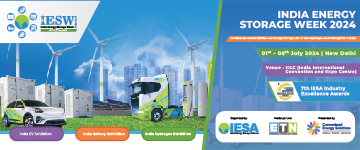Gravity-based storage: Long duration backup for renewables
The need for very long duration storage of energy is gradually emerging due to ongoing changes in the power generation scenario. We are beginning to incorporate more and more renewables in the generation mix, which comes with its own set of challenges when it comes to ensuring a consistent power supply. This necessitates storage of energy over a period of days or even months and to fulfil this application a new set of technologies is being developed.
Examples of such applications
Imagine a situation where a town or city or a large industrial hub needs to be powered entirely by renewable energy. The daily peak power demand can be in the range of few GWs and the daily energy requirement could be 10s of GWh.
In the existing scenario of the electrical grid, most of the baseload and the variation is taken care of by adjusting the output of coal-powered, hydroelectric or nuclear-powered plants. The output of these generation sources can be fully controlled by humans as per the instantaneous demand, but what happens when we are entirely relying on renewables? How do we ensure that everyone has power on demand when the power generation as well as the power consumption, both are variable on a daily basis? For this, we need very long duration storage. There are two aspects to it:
Daily backup of renewables: Energy would need to be stored and dispatched on a daily basis to compensate for the variation of solar and wind power production. The size of this storage could be 50-100 percent of the daily energy requirement (few GWh at least). It could be even more if it is designed to compensate for very low production days (overcast conditions in case of solar and lull periods in wind speed for wind farms).
Seasonal storage: Both solar and wind power production vary greatly between seasons. Solar panels are generally facing in the average direction of the Sun to maximize the annual output (south facing in the northern hemisphere and vice versa). However, between winter and summer there could be at least 20-25 percent variation in the daily energy output and peak power. Similarly, in India the wind farm productivity is much higher in the winter seasons. There are two ways to take care of these seasonal variations. First one is that we largely oversize the power generation in comparison to the demand. Thus, we ensure that the demand is lower than the production even in the low productivity season. The only downside to this is that the power generation facility would be much under-utilized in the high productivity season. The second option is that we augment the seasonal storage capability. The size of seasonal storage facilities is likely to be 20-40 times bigger in GWh as compared to the storage for daily backup.
Characteristics of long-duration storage technologies
Now that we understand the future applications of stationary storage technologies, we can begin to scope out the cost and performance characteristics of such systems.
Duration: Such systems will need to store energy over a period of days or months depending on whether they are serving daily backup or seasonal storage needs. Specifically, in the case of seasonal storage, the self-discharge should be very low
(<1 %/month). Self-discharge are the 'idling losses' or loss of energy which occurs during periods of non-usage of the storage system.
Large size (GWh, GW): As described in the previous section, such storage technologies will need to be in the range of multiple GW and 10s or 100s of GWh, depending on whether it is for daily backup or seasonal backup options respectively.
Cost ($/kWh): For a lot of the applications being currently considered such as EVs (electric vehicles), stationary storage, home backup, UPS applications for domestic and industrial locations, the cost target has been set at 100 $/kWh. All of these applications are in the kWh or MWh range. Considering that long-duration storage or seasonal storage will be several GWh, the cost target would be somewhere close to 10 $/kWh.
Long life (years): For smaller applications such as home backup or for EVs, we do not mind replacing the battery every 3-8 years. However, for extremely large GWh storage systems set up with a huge capital cost, the expectation would be to have a 30- 50-year life.
Prospective technologies for very long duration storage
Most of the technologies currently available in this category rely on the storage of energy (charging) by moving a large mass up. Similarly, release of energy (discharging) is done by moving the same mass down. In these cases, the size of the system is mainly guided by the density of the material, which is being hauled up and down. Water has a standard density of 1000 kg/m3. Pumped hydro utilizes water as the storage medium. Other technologies under development are focused on using other materials with a higher density such as concrete (2400 kg/m3), rocks (3500 kg/m3), steel (8050 kg/m3) or lead (11342 kg/m3). This means that if water were replaced by steel, the volume of required material would be reduced by approximately eight times for storing the same amount of energy (GWh).
Pumped hydro: Globally, there is about 142 GW and 2500 GWh of pumped hydro storage capacity installed. It is technologically very mature and exhibits very long service lifetimes. One of the constraints for this type of storage is that it relies on the availability of specific geological features such as that shown in the image. There need to be two water bodies located at different elevations and not too far from each other. This places a restriction on where these systems can be located. On a non-technology front, obtaining environmental permits for these type of projects is a time taking process and can often delay the set up time significantly.
ARES (Advanced Rail Energy Storage): This company is developing a technology for storing energy by moving heavy objects along a railway line up the slope to a yard located at the top. The rails are driven by electric motors and considering the friction losses, an efficiency of 80 percent is expected. The systems are being designed for 15-25 GWh of storage capacity. To save up on construction costs, this system will also need to be set up in a hilly region where the slope is not too steep. This technology is currently in the initial development stage.
Energy vault: This technology relies on storing and releasing energy via constructing and deconstructing a building respectively. The cranes located on top have multiple electric motors, which pull up modular blocks of concrete to raise a building as shown in the inset. According to the available information, each tower will store about 80 MWh of energy and operate with a roundtrip efficiency of about 80-90 percent. This company has recently received funding from Softbank. Few other companies developing technologies based on similar principles are Gravitricity and Heindl Energy.
Conclusion: One of the advantages of these technologies presented is that they are reliant on system components, which have already been engineered to perfection for other applications. For example, electric motors, railway lines and engines, cranes and concrete structures are widely used and manufactured globally on a large scale already. As a result, new inventions or more importantly development of new materials and new manufacturing processes is not required. Specifically from the Indian perspective, this presents a tremendous opportunity as many of the required skills and technologies are already being mass manufactured domestically. As a result, India can play a leading role in the development of such storage solutions for the global market.

